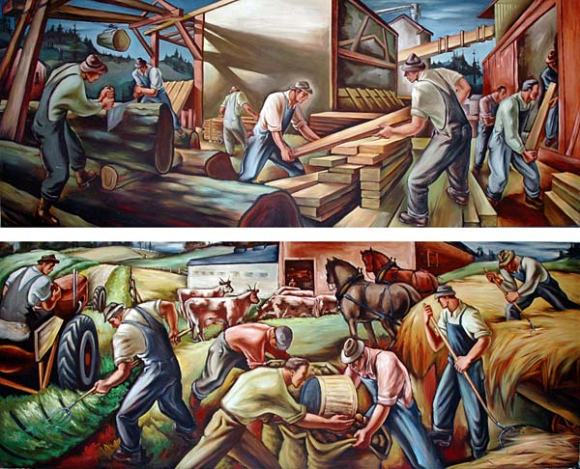Objectives:
- Learn about the First Amendment to the Constitution and US obscenity law
- Examine historical and current incidents of Censorship in the US and their relationship to public funding for the Arts
- Learn about the National Endowment for the Arts
- Explore the relationship of cultural values to free speech and tolerance
Original Post:
I have been to some museums like MOMA and Metropolitan in New York. I saw Da Vinci’s Starry Night and Moni’s Water Lily. Although the museums are so big, I could easily find these paintings because almost every visitor would go to see them. What I needed to do was to find the most crowded place. I was the one of the crowds that took pictures and felt so lucky to see the famous paintings. However, do we pay so much attention to the masterpieces that ignore the public art outside the building? Before doing this week’s research and reading, I have never really looked at a public art. What is public art? In my opinion, public art should open to everyone, which means we can see it in an opening place like street, park and shopping mall. It also needs to represent a civic or local culture and history.
According to Doss, he uses Jack Becker’s definition that “Public art is artwork in the public realm regardless of whether it is situated on public or private property, or whether it is acquired through public or private funding” (2). Public art can be any diverse art platforms like a sculpture, mural, painting, carving or photograph. “Public art is a ‘multifaceted’ culture arena that is ‘open to artists of all strips, without predetermined rules or a mutually agreed upon critical language” (2). Public art relates to American’s culture and history. It is a way to represent mass culture and society. As Doss says, “Today, public art diversity speaks to America’s diversity – and to the increasing number of Americans who want to see their cultural interests represented in the public sphere” (2).
For this week’s research, I learnt more about Oregon’s local culture through visiting the murals in Knight Library. I noticed the two murals two years ago when I went upstairs. But, I only had a glimpse of them and thought of “Wow, they are so big!” I didn’t know their meanings and the painters. By looking at the website, I knew that Albert and Arthur Runquist borthers painted two murals in the 1930s as part of the Work Progress Administration Art Project. The two murals are Development of Arts and Development of Sciences. The arts mural uses tree as a symbol of universal human aspiration to create things of beauty. Each panel shows a time period such as Earliest Primitive Period, Greek Period or Medieval Period. The sciences mural also uses tree to represent humanity rising to erect posture of thinking being. It shows humans and their life situations from Stone Age to Modern Period. From the murals, the audiences can get a visual sense of the arts and sciences progress in out history.
In Doss article, he also mentions the importance of placemaking. He indicates that “Public art’s visibility relates to its functional utility. Since the 1970s, Miwon Kwon explains, public art has been charged with generating ‘place-bound identity’ and lending a sense of distinction and authenticity to the nations ever more homogenous public space” (5). Based on the website of the murals, the Knight Library, where the murals are located, was designed by Ellis F. Lawrence. His design of Knight Library was Art Deco with “modernized Lombardy and Greco-Roman” elements. Public art was assed to the design.
Reflection:
I found another public art in Oregon.Carl Morris was an American artist. He opened the Spokane Art Center through the Federal Art Project during the Great Depression. In 1941, he painted murals for The Eugene Post Office. The two murals below are his paintings. “A principle that we follow in selecting artwork to feature with each Music Throu’ the Eye program is that the piece reflect in some fashion the theme of the OFAM music series in question. Carl Morris’ murals Agriculture and Lumbering are particularly appropriate for this year’s American Composers Series ‘On the Shoulders of Giants.’ They well reflect the theme of “the common people’ as great, and they represent the spirit of artistic accessibility.” (LCC)
Otherwise, I was so impressed by the theme of The Federal Arts Project: art of the people, by the people, for the people. Here is a video of the lecture for the “History of Religious” mural series created by CalMorris from Jordan Schnitzer Museum of Art. Let’s appreciate the people who helped and paid efforts around us!
Table of Contents:
Artifact 4: The Art of Personal Adornment
Artifact 5: The Anesthetic of Horror
Artifact 6: Creative Spirituality
